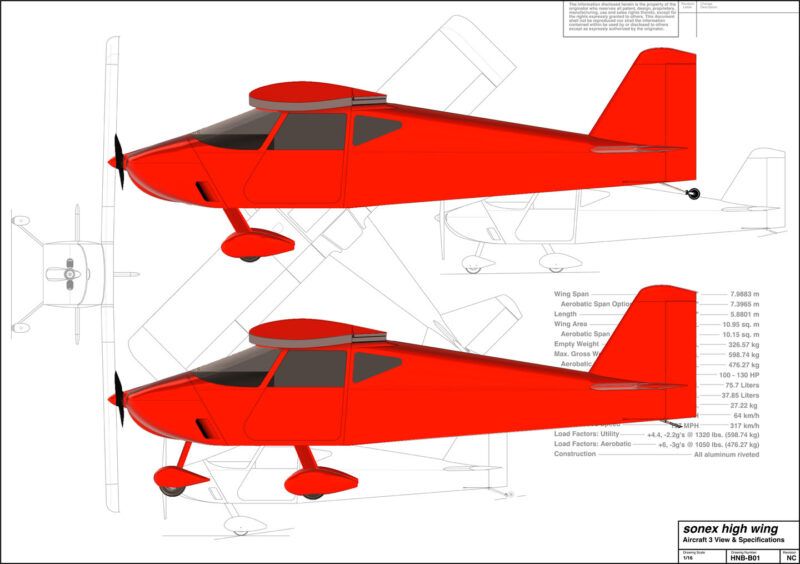Kit manufacturer Sonex Aircraft has announced it will develop a line of high-wing models, but don’t start clearing out space in your garage just yet. Sonex hopes to have the high-wing program on display and ready to take orders at the 2023 edition of AirVenture.
The company continues to focus its current energy on developing its two-seat SubSonex JSX-2T jet, which it hopes to have ready for prime time by next year’s AirVenture. As the home team based at Wittman Field in Oshkosh, Sonex has some flexibility when it comes to preparing to display at GA’s biggest show on earth.
The high-wing model will be available with a choice of conventional or Y-tail, as well as optional nose- or tailwheel. So, it’s really one basic design with four possible configurations.
Cantilever, high-wing aircraft with doors are new design territory for Sonex. While the Sonex party line is that the new designs are not meant to tap the popularity of STOL competitions and backcountry, gravel-bar flying, they admit they expect some builders will install floats, skis and big tires. But the larger goal of the program is, “We wanted to bring expanded utility and ease of pilot access to the existing Sonex mission of fun everyday local flying, aerobatics, and fuel-efficient and fast, long cross-countries to the high-wing world.”
Sonex even said it is mirroring the appeal of Steve Wittman’s classic Tailwind design, but in a more modern all-metal version. Pilots of the high-wing persuasion looking for efficient cross-country flying with the ability to operate from unimproved fields are the go-to target market.
Sonex’s plans for the sport-pilot-eligible (1,320-lb. max takeoff weight) high-wing Sonexes call for 20 gallons’ fuel capacity, with optional inboard aux tankage for 10 gallons more. With a 44-inch-wide cabin, it will be aerobatic, said Sonex (when flown solo at less than 1,050 pounds). And with removable outer wing panels, it can be towed to and from the airport with a trailer. Design plans call for engines of 100 HP or greater with a maximum firewall-forward installation weight of 200 pounds.




































Looks remarkably like a Wittman Tailwind, doesn’t it?
The SONEX is a pretty small airplane. They barely come up to my waist. How would you get in a high wing version? I think I’d have to lie on the ground to slither in the door.
As others have said it looks a lot like a Wittman Tailwind. That is a simple and fast building and performing plane. As said an updated metal version.
Small airplanes are like restaurants – everyone wants to have their own line.
Real economics?
Sonex’ backcountry line matches someone else’s – Van’s?
‘Backcountry’ has been getting PR from hotrod conversions of more basic high-wing airplanes, but is it a fad? IOW, how big is the market? (High wing to give visibility below as you reconnoiter the terrain and check for absence of wildlife and eco-idiots on the landing area.)
(Of course in the 1950s, Britain had a zillion paper airplanes and built some with rather varied success – Brabazon anyone? (Just completely wrong for the emerging airline market.) Yes, there eventually were successes – some small twins, the Viscount did well, the Vanguard and Britannia somewhat less including CL-44 freighter version of the latter.
As airfields near desirable destinations continue to get torn up or have multi year waiting lists for hangar space, the only growth area will likely continue to be STOL.
Sketchley, I dunno about your Winnipeg area but Idaho and Arizona are certainly investing in “backcountry” flying.
And congratulations for your gratuitous slam against “eco-idiots” who mostly hope to save the forests and planet from you and your corporate masters. Are you a climate change denier too? They’re not just dumb Americans anymore, EH?
Calling Jim Bede…
What’s your point?
The BD-1 was initially “sold” as a low cost, experimental, aerobatic, all metal plane that you could tow home.